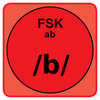How to quickly parse a language to XML with pyPEG
Because this is a common task, maybe this little sample can be helpful. The following backend function writes out a pyAST to XML:
from xml.sax.saxutils import escape
def pyAST2XML(pyAST):
if isinstance(pyAST, str):
return escape(pyAST)
if isinstance(pyAST, tuple):
result = "<" + pyAST[0].replace("_", "-") + ">"
for e in pyAST[1:]:
result += pyAST2XML(e)
result += "</" + pyAST[0].replace("_", "-") + ">"
else:
result = ""
for e in pyAST:
result += pyAST2XML(e)
return result
This sample program uses the implementation above to convert a simple language to XML:
from pyPEG import parseLine
from xmlast import pyAST2XML
import re
def call(): return symbol, "(", parms, ")", ";"
def symbol(): return re.compile(r"\w+")
def parms(): return symbol, -1, (",", symbol)
def program(): return call, -1, call
text = "f(x, y);"
result, rest = parseLine(text, program)
print pyAST2XML(result)
A test run:
vb@bayhorse:~/pyPEG % python sample3.py | xmlstarlet fo
<?xml version="1.0"?>
<program>
<call>
<symbol>f</symbol>
<parms>
<symbol>x</symbol>
<symbol>y</symbol>
</parms>
</call>
</program>
vb@bayhorse:~/pyPEG %
publiziert Sun, 17 May 2009 14:58:56 +0200

